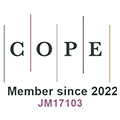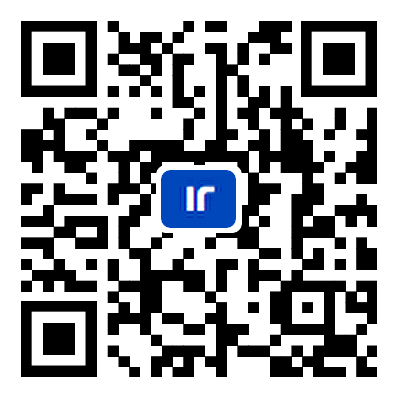REFERENCES
1. Wang D, Lv H, Wu J. In-flight initial alignment for small UAV MEMS-based navigation via adaptive unscented Kalman filtering approach. Aerospace Science and Technology 2017;61:73-84.
2. Paredes WD, Kaushal H, Vakilinia I, Prodanoff Z. LoRa technology in flying ad hoc networks: a survey of challenges and open issues. Sensors 2023;23:2403.
3. Davoli L, Pagliari E, Ferrari G. Hybrid LoRa-IEEE 802.11s opportunistic mesh networking for flexible UAV swarming. Drones 2021;5:26.
4. Cheng J, Ren P, Deng T. A novel ranging and IMU-Based method for relative positioning of two-MAV formation in GNSS-denied environments. Sensors 2023;23:4366.
5. Ortiz-villarejo AJ, Gutiérrez Soler L. A low-cost, easy-way workflow for multi-scale archaeological features detection combining lidar and aerial orthophotography. Remote Sens 2021;13:4270.
6. Friess C, Niculescu V, Polonelli T, Magno M, Benini L. Fully onboard SLAM for Distributed mapping with a swarm of Nano-Drones. arXiv 2023:03678.
7. Woods DD. Four concepts for resilience and the implications for the future of resilience engineering. Reliab Eng Syst Safe 2015;141:5-9.
8. Madni AM, Erwin D, Sievers M. Constructing models for systems resilience: challenges, concepts, and formal methods. Systems 2020;8:3.
9. Ordoukhanian E, Madni A. Model-based approach to engineering resilience in multi-UAV systems. Systems 2019;7:11.
10. Phadke A, Antonio Medrano F, Chu T. Engineering resiliency in UAV swarms-a bibliographic analysis. J Phys: Conf Ser 2022;2330:012007.
11. Wang J, Teng X, Li Z, Yu Q, Bian Y, Wei J. VSAI: A multi-view dataset for vehicle detection in complex scenarios using aerial images. Drones 2022;6:161.
12. VOSviewer-visualizing scientific landscapes. Available from: https://www.vosviewer.com [Last accessed on 21 Sep 2023].
13. Iqbal U, Riaz MZB, Zhao J, Barthelemy J, Perez P. Drones for flood monitoring, mapping and detection: a bibliometric review. Drones 2023;7:32.
14. Rodríguez M, Melgar SG, Cordero AS, Márquez JMA. A critical review of unmanned aerial vehicles (UAVs) use in architecture and urbanism: scientometric and bibliometric analysis. Appl Sci 2021;11:9966.
15. Phadke A, Medrano FA. Towards resilient UAV swarms-a breakdown of resiliency requirements in UAV swarms. Drones 2022;6:340.
16. Abdelkader M, Güler S, Jaleel H, Shamma JS. Aerial swarms: recent applications and challenges. Curr Robot Rep 2021;2:309-20.
17. Phadke A, Medrano FA, Sekharan CN, Chu T. Designing UAV Swarm experiments: a simulator selection and experiment design process. Sensors 2023;23:7359.
18. Merz M, Pedro D, Skliros V, et al. Autonomous UAS-based agriculture applications: general overview and relevant european case studies. Drones 2022;6:128.
19. Pearson S, Camacho-villa TC, Valluru R, et al. Robotics and Autonomous systems for net zero agriculture. Curr Robot Rep 2022;3:57-64.
20. Lee HS, Shin BS, Thomasson JA, Wang T, Zhang Z, Han X. Development of multiple UAV collaborative driving systems for improving field phenotyping. Sensors 2022;22:1423.
21. Zhang W, Miao Z, Li N, He C, Sun T. Review of current robotic approaches for precision weed management. Curr Robot Rep 2022;3:139-51.
22. Tsouros DC, Bibi S, Sarigiannidis PG. A review on UAV-based applications for precision agriculture. Information 2019;10:349.
23. Odonkor P, Ball Z, Chowdhury S. Distributed operation of collaborating unmanned aerial vehicles for time-sensitive oil spill mapping. Swarm and Evolutionary Computation 2019;46:52-68.
24. Vasilijevic A, Calado P, Lopez-Castejon F, et al. Heterogeneous robotic system for underwater oil spill survey. Genova, Italy; 2015, pp. 1-7.
25. Roldán JJ, Garcia-Aunon P, Garzón M, de León J, Del Cerro J, Barrientos A. Heterogeneous multi-robot system for mapping environmental variables of greenhouses. Sensors 2016;16:1018.
26. Goian A, Ashour R, Ahmad U, Taha T, Almoosa N, Seneviratne L. Victim localization in USAR scenario exploiting multi-layer mapping structure. Remote Sens 2019;11:2704.
27. Cardona GA, Calderon JM. Robot Swarm navigation and victim detection using rendezvous consensus in search and rescue operations. Appl Sci 2019;9:1702.
28. Siemiatkowska B, Stecz W. A framework for planning and execution of drone swarm missions in a hostile environment. Sensors 2021;21:4150.
29. Gans NR, Rogers JG. Cooperative multirobot systems for military applications. Curr Robot Rep 2021;2:105-11.
30. Ko Y, Kim J, Duguma DG, Astillo PV, You I, Pau G. Drone secure communication protocol for future sensitive applications in military zone. Sensors 2021;21:2057.
31. Nex F, Duarte D, Steenbeek A, Kerle N. Towards real-time building damage mapping with low-cost UAV solutions. Remote Sens 2019;11:287.
32. Zhang R, Li H, Duan K, et al. Automatic detection of earthquake-damaged buildings by integrating UAV oblique photography and infrared thermal imaging. Remote Sens 2020;12:2621.
33. Nagasawa R, Mas E, Moya L, Koshimura S. Model-based analysis of multi-UAV path planning for surveying postdisaster building damage. Sci Rep 2021;11:18588.
34. Outay F, Mengash HA, Adnan M. Applications of unmanned aerial vehicle (UAV) in road safety, traffic and highway infrastructure management: Recent advances and challenges. Transp Res Part A Policy Pract 2020;141:116-29.
35. Klaine PV, Nadas JPB, Souza RD, Imran MA. Distributed drone base station positioning for emergency cellular networks using reinforcement learning. Cognit Comput 2018;10:790-804.
36. Hydher H, Jayakody DNK, Hemachandra KT, Samarasinghe T. Intelligent UAV Deployment for a disaster-resilient wireless network. Sensors 2020;20:6140.
37. Ferrag MA, Maglaras L. Deliverycoin: an ids and blockchain-based delivery framework for drone-delivered services. Computers 2019;8:58.
38. Rinaldi M, Primatesta S, Bugaj M, Rostáš J, Guglieri G. Development of heuristic approaches for last-mile delivery tsp with a truck and multiple drones. Drones 2023;7:407.
39. Phadke A, Ustymenko S. Updating the taxonomy of intrusion detection systems. in proceedings of the 2021 IEEE 45th annual computers, software, and applications conference (COMPSAC). Madrid, Spain; 2021.pp.1085-91.
40. Miao Y, Tang Y, Alzahrani BA, Barnawi A, Alafif T, Hu L. Airborne LiDAR assisted obstacle recognition and intrusion detection towards unmanned aerial vehicle: architecture, modeling and evaluation. IEEE Trans Intell Transport Syst 2021;22:4531-40.
41. Quamar MM, ElFerik S. Control and coordination for swarm of uavs under multi-predator attack. in proceedings of the 2023 systems and information engineering design symposium (SIEDS); 2023 April 96-101; Charlottesville, VA, USA.
42. Chi P, Wei J, Wu K, Di B, Wang Y. A bio-inspired decision-making method of UAV swarm for attack-defense confrontation via multi-agent reinforcement learning. Biomimetics 2023;8:222.
43. Opromolla R, Inchingolo G, Fasano G. Airborne visual detection and tracking of cooperative uavs exploiting deep learning. Sensors 2019;19:4332.
44. Makkapati VR, Tsiotras, P. Apollonius allocation algorithm for heterogeneous pursuers to capture multiple evaders. arXiv 2006:10253.
45. Lappas V, Shin H, Tsourdos A, et al. Autonomous unmanned heterogeneous vehicles for persistent monitoring. Drones 2022;6:94.
46. Sial MB, Zhang Y, Wang S, et al. Bearing-based distributed formation control of unmanned aerial vehicle swarm by quaternion-based attitude synchronization in three-dimensional space. Drones 2022;6:227.
47. Li S, Wang X, Wang S, Zhang Y. Distributed bearing-only formation control for UAV-UWSV heterogeneous system. Drones 2023;7:124.
48. Vásquez BL, Barca JC. Adversarial scenarios for herding UAVs and counter-swarm techniques. Robotica 2023;41:1436-51.
49. Jiang B, Qin K, Li T, Lin B, Shi M. Robust Cooperative control of UAV swarms for dual-camp divergent tracking of a heterogeneous target. Drones 2023;7:306.
50. Cai Y, Wei Z, Li R, Ng DWK, Yuan J. Joint trajectory and resource allocation design for energy-efficient secure uav communication systems. IEEE Trans Commun 2020;68:4536-53.
51. Zimroz P, Trybała P, Wróblewski A, et al. Application of UAV in search and rescue actions in underground mine-A specific sound detection in noisy acoustic signal. Energies 2021;14:3725.
52. Wang C, Liu P, Zhang T, Sun J. The adaptive vortex search algorithm of optimal path planning for forest fire rescue UAV. In Proceedings of the Advanced Information Technology, Electronic and Automation Control Conference(IAEAC 2018). Chongqing, China; 2018.pp.400-03.
53. Ausonio E, Bagnerini P, Ghio M. Drone swarms in fire suppression activities: a conceptual framework. Drones 2021;5:17.
54. Hu J, Niu H, Carrasco J, Lennox B, Arvin F. Fault-tolerant cooperative navigation of networked UAV swarms for forest fire monitoring. Aerospace Science and Technology 2022;123:107494.
55. Saffre F, Hildmann H, Karvonen H, Lind T. Monitoring and cordoning wildfires with an autonomous swarm of unmanned aerial vehicles. Drones 2022;6:301.
56. Madridano Á, Al-kaff A, Flores P, Martín D, de la Escalera A. Software architecture for autonomous and coordinated navigation of uav swarms in forest and urban firefighting. Appl Sci 2021;11:1258.
57. Aydin B, Selvi E, Tao J, Starek M. Use of fire-extinguishing balls for a conceptual system of drone-assisted wildfire fighting. Drones 2019;3:17.
58. Alsammak ILH, Mahmoud MA, Aris H, Alkilabi M, Mahdi MN. The use of swarms of unmanned aerial vehicles in mitigating area coverage challenges of forest-fire-extinguishing activities: a systematic literature review. Forests 2022;13:811.
59. Bharany S, Sharma S, Frnda J, et al. Wildfire monitoring based on energy efficient clustering approach for FANETS. Drones 2022;6:193.
60. Lee S, Morrison JR. Decision support scheduling for maritime search and rescue planning with a system of UAVs and fuel service stations. In Proceedings of the International Conference on Unmanned Aircraft Systems (ICUAS). Denver, CO, USA; 2015.pp.1168-77.
61. Chen M, Zeng F, Xiong X, Zhang X, Chen Z. A maritime emergency search and rescue system based on unmanned aerial vehicle and its landing platform. In Proceedings of the 2021 IEEE International Conference on Electrical Engineering and Mechatronics Technology (ICEEMT). Qingdao, China; 2021.pp.758-61.
62. Cho S, Park J, Park H, Kim S. Multi-UAV coverage path planning based on hexagonal grid decomposition in maritime search and rescue. Mathematics 2022;10:83.
63. Liu L, Gu Q, Li L, Lai X. Research on maritime search and rescue recognition based on agent technology. In Proceedings of the 2020 International Conference on Artificial Intelligence and Electromechanical Automation (AIEA); 2020 June 201-5; Tianjin, China.
64. Phadke A, Medrano, A. Drone2Drone: a search and rescue framework for finding lost UAV swarm agents. TAMUCC- Symposium for Student Innovation, Research, and Creative Activities Posters; 2023 April.
65. Queralta JP, Taipalmaa J, Can Pullinen B, et al. Collaborative multi-robot search and rescue: planning, coordination, perception, and active vision. IEEE Access 2020;8:191617-43.
66. Lygouras E, Santavas N, Taitzoglou A, Tarchanidis K, Mitropoulos A, Gasteratos A. Unsupervised human detection with an embedded vision system on a fully autonomous UAV for search and rescue operations. Sensors 2019;19:3542.
67. Gianni M, Ferri F, Menna M, Pirri F. Adaptive robust three-dimensional trajectory tracking for actively articulated tracked vehicles*. J Field Robotics 2016;33:901-30.
68. Arnold R, Jablonski J, Abruzzo B, Mezzacappa E. Heterogeneous UAV multi-role swarming behaviors for search and rescue. In Proceedings of the Conference on Cognitive and Computational Aspects of Situation Management (CogSIMA). Victoria, BC, Canada; 2020.pp.122-8.
69. Ruetten L, Regis PA, Feil-Seifer D, Sengupta S. Area-optimized UAV swarm network for search and rescue operations. 2020 10th Annual Computing and Communication Workshop and Conference (CCWC);2020, pp. 0613-8
70. Lu Y, Ma Y, Wang J. Multi-population parallel wolf pack algorithm for task assignment of UAV swarm. Appl Sci 2021;11:11996.
71. Xu S, Li L, Zhou Z, Mao Y, Huang J. A Task allocation strategy of the UAV swarm based on multi-discrete wolf pack algorithm. Appl Sci 2022;12:1331.
72. Lu Y, Ma Y, Wang J, Han L. Task assignment of UAV swarm based on wolf pack algorithm. Appl Sci 2020;10:8335.
73. Garg V, Tiwari R, Shukla A. Comparative analysis of fruit fly-inspired multi-robot cooperative algorithm for target search and rescue. In Proceedings of the 2022 IEEE World Conference on Applied Intelligence and Computing (AIC); 2022 June 444-50.
74. Shi K, Zhang X, Xia S. Multiple swarm fruit fly optimization algorithm based path planning method for multi-UAVs. Appl Sci 2020;10:2822.
75. Luo R, Zheng H, Guo J. Solving the multi-functional heterogeneous UAV cooperative mission planning problem using multi-swarm fruit fly optimization algorithm. Sensors 2020;20:5026.
76. Chen B, Rho S. Autonomous tactical deployment of the UAV array using self-organizing swarm intelligence. IEEE Consumer Electron Mag 2020;9:52-6.
77. Al-Kaff A, Gómez-Silva MJ, Moreno FM, de la Escalera A, Armingol JM. An appearance-based tracking algorithm for aerial search and rescue purposes. Sensors 2019;19:652.
78. Qi F, Zhu M, Li Z, et al. Automatic air-to-ground recognition of outdoor injured human targets based on UAV Bimodal information: the explore study. Appl Sci 2022;12:3457.
79. Chatziparaschis D, Lagoudakis MG, Partsinevelos P. Aerial and ground robot collaboration for autonomous mapping in search and rescue missions. Drones 2020;4:79.
80. Chaves AN, Cugnasca PS, Jose J. Adaptive search control applied to search and rescue operations using unmanned aerial vehicles (UAVs). IEEE Latin Am Trans 2014;12:1278-83.
81. Radoglou-grammatikis P, Sarigiannidis P, Lagkas T, Moscholios I. A compilation of UAV applications for precision agriculture. Computer Networks 2020;172:107148.
82. Hattenberger G, Verdu T, Maury N, et al. Field report: deployment of a fleet of drones for cloud exploration. Int J Micro Air Veh 2022;14:175682932110708.
83. Mansour HS, Mutar MH, Aziz IA, et al. Cross-layer and energy-aware AODV routing protocol for flying Ad-Hoc networks. Sustainability 2022;14:8980.
84. Chen S, Shi L, Ding X, Lv Z, Li Z. Energy efficient resource allocation and trajectory optimization in uav-assisted mobile edge computing system. In Proceedings of the 2021 7th International Conference on Big Data Computing and Communications (BigCom). Deqing, China; 2021.pp.7-13.
85. Yang Z, Pan C, Wang K, Shikh-bahaei M. Energy efficient resource allocation in UAV-enabled mobile edge computing networks. IEEE Trans Wireless Commun 2019;18:4576-89.
86. Lansky J, Rahmani AM, Malik MH, et al. An energy-aware routing method using firefly algorithm for flying ad hoc networks. Sci Rep 2023;13:1323.
87. Raza W, Osman A, Ferrini F, Natale FD. Energy-efficient inference on the edge exploiting TinyML capabilities for UAVs. Drones 2021;5:127.
88. Park S, Kim HT, Kim H. Energy-efficient topology control for UAV networks. Energies 2019;12:4523.
89. Sawalmeh A, Othman NS, Shakhatreh H. Efficient deployment of multi-UAVs in massively crowded events. Sensors 2018;18:3640.
90. Al-dosari K, Hunaiti Z, Balachandran W. Systematic review on civilian drones in safety and security applications. Drones 2023;7:210.
91. Kwon D, Yoon G, Kim SY, Kwon Y. A study on auto patrol drone development for safety management. In Proceedings of the Proceedings of the International Conference on Compute and Data Analysis. Lakeland, FL, USA; 2017.pp.293-7.
92. Yu Z, Gong Y, Gong S, Guo Y. Joint Task offloading and resource allocation in UAV-enabled mobile edge computing. IEEE Internet Things J 2020;7:3147-59.
93. Alam MM, Moh S. Joint topology control and routing in a UAV swarm for crowd surveillance. J Netw Comput Appl 2022;204:103427.
94. Xu C, Zhang K, Jiang Y, Niu S, Yang T, Song H. Communication aware UAV swarm surveillance based on hierarchical architecture. Drones 2021;5:33.
95. Chen Y, Dong Q, Shang X, Wu Z, Wang J. Multi-UAV autonomous path planning in reconnaissance missions considering incomplete information: a reinforcement learning method. Drones 2023;7:10.
96. Kashino Z, Nejat G, Benhabib B. A hybrid strategy for target search using static and mobile sensors. IEEE Trans Cybern 2020;50:856-68.
97. Qin C, Candan F, Mihaylova LS, Pournaras E. 3, 2, 1, drones go! A testbed to take off UAV swarm intelligence for distributed sensing. arXiv 2022:05914.
98. Hong Y, Jung S, Kim S, Cha J. Autonomous mission of multi-uav for optimal area coverage. Sensors 2021;21:2482.
99. Loureiro G, Dias A, Martins A, Almeida J. Emergency landing spot detection algorithm for unmanned aerial vehicles. Remote Sens 2021;13:1930.
100. Santin R, Assis L, Vivas A, Pimenta LCA. Matheuristics for multi-UAV routing and recharge station location for complete area coverage. Sensors 2021;21:1705.
101. Hong I, Kuby M, Murray AT. A range-restricted recharging station coverage model for drone delivery service planning. Transport Res C-Emer 2018;90:198-212.
102. Balta H, Velagic J, Beglerovic H, De Cubber G, Siciliano B. 3D registration and integrated segmentation framework for heterogeneous unmanned robotic systems. Remote Sens 2020;12:1608.
103. Dewan A, Mahendran A, Soni N, Krishna KM. Optimization based coordinated UGV-MAV exploration for 2D augmented mapping. Available from: https://citeseerx.ist.psu.edu/document?repid=rep1&type=pdf&doi=03c1ff959a47d215fe404fde769ca23ac5a74dda [Last accessed on 21 Sep 2023].
104. Mahendran A, Dewan A, Soni N, Krishna KM. UGV-MAV collaboration for augmented 2D maps. In Proceedings of the Proceedings of Conference on Advances In Robotics; 2013.pp.1-6.
105. Jung S, Jo Y, Kim Y. Aerial Surveillance with low-altitude long-endurance tethered multirotor UAVs using photovoltaic power management system. Energies 2019;12:1323.
106. Zhu L, Ma C, Li J, Lu Y, Yang Q. Connectivity-maintenance UAV formation control in complex environment. Drones 2023;7:229.
107. Stolfi DH, Danoy G. An evolutionary algorithm to optimise a distributed UAV swarm formation system. Appl Sci 2022;12:10218.
108. Luo Y, Huang X, Yang J, Wu F, Leng S. Auction mechanism-based multi-type task planning for heterogeneous UAVs swarm. In Proceedings of the International Conference on Communication Technology; 2020.pp. 698-702.
109. Huang R, Zou D, Vaughan R, Tan P. Active image-based modeling with a toy drone. 2018 IEEE International Conference on Robotics and Automation (ICRA); 2018.pp. 6124-31.
110. Power W, Pavlovski M, Saranovic D, Stojkovic I, Obradovic Z. Autonomous navigation for drone swarms in GPS-denied environments using structured learning. In Artificial Intelligence Applications and Innovations; IFIP Advances in Information and Communication Technology; 2020.pp. 219-31.
111. Sarras I, Marzat J, Bertrand S, Piet-lahanier H. Collaborative multiple micro air vehicles’ localization and target tracking in GPS-denied environment from range-velocity measurements. International Journal of Micro Air Vehicles 2018;10:225-39.
112. Chen S, Jiang B, Pang T, et al. Firefly swarm intelligence based cooperative localization and automatic clustering for indoor FANETs. PLoS One 2023;18:e0282333.
113. Basiri A, Mariani V, Glielmo L. Improving visual SLAM by combining SVO and ORB-SLAM2 with a complementary filter to enhance indoor mini-drone localization under varying conditions. Drones 2023;7:404.
114. Ekici M, Seçkin AÇ, Özek A, Karpuz C. Warehouse drone: indoor positioning and product counter with virtual fiducial markers. Drones 2023;7:3.
115. Qamar S, Khan SH, Arshad MA, Qamar M, Khan A. Autonomous drone swarm navigation and multi-target tracking in 3d environments with dynamic obstacles. arXiv 2022:06253.
117. Smith P, Hunjet R, Aleti A, Barca JC. Adaptive data transfer methods via policy evolution for UAV swarms. In Proceedings of the International Telecommunication Networks and Applications Conference (ITNAC). Melbourne, VIC, Australia; 2017.pp.1-8.
118. Wang K, Zhang X, Qiao X, et al. Adjustable fully adaptive cross-entropy algorithms for task assignment of multi-UAVs. Drones 2023;7:204.
119. Khan S, Khan MZ, Khan P, Mehmood G, Khan A, Fayaz M. An ant-hocnet routing protocol based on optimized fuzzy logic for swarm of UAVs in FANET. Wirel Commun Mob Com 2022;2022:1-12.
120. Sun Q, Li H, Zhang Y, Xie Y, Liu C. A baseline assessment method of UAV swarm resilience based on complex networks. In Proceedings of the 2021 IEEE 19th World Symposium on Applied Machine Intelligence and Informatics (SAMI); 2021.pp. 000083-6.
121. Shen H, Zong Q, Lu H, Zhang X, Tian B, He L. A distributed approach for lidar-based relative state estimation of multi-UAV in GPS-denied environments. Chinese J Aeronaut 2022;35:59-69.
122. Federal Aviation Administration. Remote identification of unmanned aircraft-final rule. Available from: https://www.faa.gov/newsroom/remoteid-final-rule [Last accessed on 25 Sep 2023].
123. Phadke A, Boyd J, Medrano FA, Starek M. Navigating the skies: examining the FAA’s remote identification rule for unmanned aircraft systems. Drone Syst Appl 2023;11:1-4.
124. Petkovics I, Petkovic D, Petkovics A. IoT devices vs. drones for data collection in agriculture. In DAAAM International Scientific Book 2017; 2017; pp. 063-80.
125. Huang S, Teo RSH, Kwan JLP, Liu W, Dymkou SM. Distributed UAV loss detection and auto-replacement protocol with guaranteed properties. J Intell Robot Syst 2019;93:303-16.
126. Zhao X, Lv Z, Qiu Q, Wu Y. Designing two-level rescue depot location and dynamic rescue policies for unmanned vehicles. Reliab Eng Syst Safe 2023;233:109119.
127. Gomes J, Mariano P, Christensen AL. Cooperative coevolution of partially heterogeneous multiagent systems. In Proceedings of the International Conference on Autonomous Agents and Multiagent Systems; Istanbul; 2015.pp. 297-305. Available from: https://dl.acm.org/doi/abs/10.5555/2772879.2772919# [Last accessed on 25 Sep 2023].
128. Deka A, Sycara K. Natural emergence of heterogeneous strategies in artificially intelligent competitive teams. ASI 2021; 12689:13-25.
129. Incze ML, Sideleau SR, Gagner C, Pippin CA. Communication and collaboration among heterogeneous unmanned systems using SAE Jaus standard formats and protocols. IFAC-PapersOnLine 2015;48:7-10.









